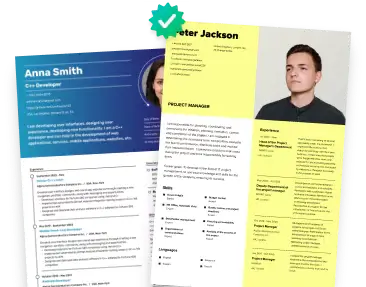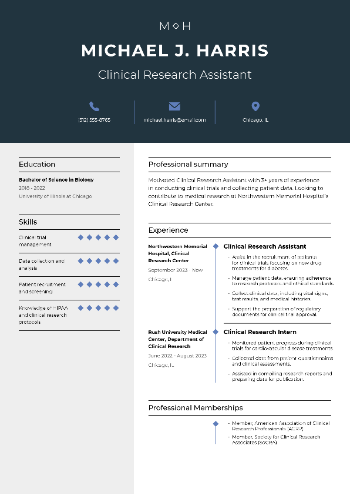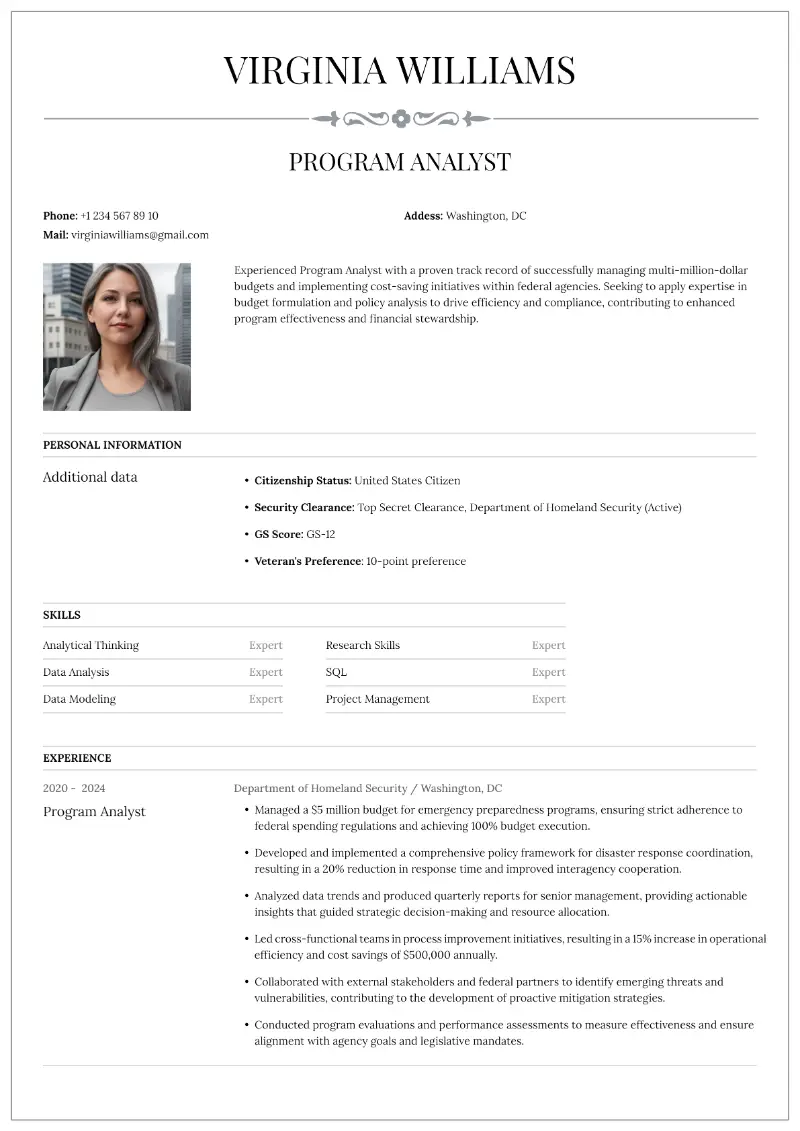When creating a resume, every detail matters—down to the smallest piece of personal information.
One common question job seekers often face is "Should I include my middle name on my resume?" While it might seem like a minor detail, this decision can impact how you present yourself to potential employers.
In this article, we’ll explore the pros and cons of putting your middle name on your resume. We will help you determine whether it’s right for your job search.
Examples of using a middle name on a resume
Reasons to put your middle name on a resume
Professional Branding
If your middle name is part of your identity (e.g., you go by your middle name in professional settings), it can help with consistency across platforms like LinkedIn, social media, or published works.
In industries like entertainment or publishing, specialists often use their full name to create a distinct and recognizable identity (e.g., “John Fitzgerald Kennedy”).
Distinction
If your first and last name are quite common, adding your middle name can help differentiate you from others. It can make your resume stand out if there are other candidates with similar names.
Cultural or Religious Significance
Some people have a strong cultural or religious connection to their middle name and prefer to include it as a sign of identity.
In Hispanic cultures, it's common for people to include both their paternal and maternal surnames. This could be a form of professional identification, making middle names part of that tradition.
Family Tradition
In some cases, using your middle name could reflect a family tradition, or you might share yours with an ancestor, and you want to highlight that connection.
Legal Consistency
If your middle name is used in official documents like your passport or educational certificates, including it ensures all legal paperwork is aligned.
Example:
If your middle name appears on your driver’s license, passport, or other legal documents, including it on your resume ensures consistency with official records.
Perceived Professionalism
In certain industries, using your full name on a resume can be seen as more formal or sophisticated. This is especially true in sectors where professionalism in appearance and presentation is important.
A study by the National Bureau of Economic Research found that using a formal name can sometimes lead to perceptions of higher status and authority, especially in conservative fields like law or research.
Personal Preference
Simply put, if you prefer to be addressed by your full name or feel it represents you better, including your middle name can reflect confidence and authenticity in your identity.
Create your professional Resume in 10 minutes for FREE
Build My Resume
Why is it sometimes better to leave your full name out
Unnecessary Length
Including a middle name can make your header longer than necessary. Since applications are often scanned quickly by recruiters, you want to keep things concise. Removing the middle name can streamline your document, especially when space is limited.
Recruiters often skim resumes in less than 30 seconds. Reducing the name length can make yours cleaner and more focused on the qualifications.
Professional Focus
Resumes should prioritize relevant information for the job you're applying for. Your full name might not add anything extra in terms of qualifications for the position or experience, so it could be seen as less important in the context of your professional history.
Avoid Confusion
In some cultures, middle names are rarely used. Including one might cause confusion or even make it more difficult for someone to recognize or search for you online. This is especially true if you’ve been using your first and last name in a professional context.
Privacy Concerns
If your middle name is unique or linked to your identity in a way you’d prefer to keep private (for example, cultural or familial significance), omitting it might be helpful.
For example, if your middle name reflects your ethnicity, and you're concerned about unconscious proximity biases, leaving it off can mitigate potential discrimination risks.
Consistency
If you typically use just your first and last name in professional settings, keeping your resume consistent with that might be a more straightforward approach.
Mispronunciation
If your middle name is complex or unfamiliar to the hiring team, it might create hesitation. Keeping just your first and last name can make it easier for recruiters to remember and pronounce confidently.
Examples of excluding a full name on a resume:
How to put your middle name on a resume if you choose to do so
1. Use a middle initial
Opt for this if your middle name isn't a significant identifier or if you prefer a professional but concise header.
Example:
Cynthia J. Mars
- Why it's good?
- Keeps your name short and formal while still including the initial for distinction.
2. Include the full middle name
Use it if your middle name is part of your identity or helps avoid confusion with someone else (e.g., common first/last names).
Example:
Jane Marie Doe
3. Header considerations
Employ a formal style that aligns with the tone of your resume.
Example:
Thomas S. Grant
Email: thomas.grant@gmail.com | LinkedIn: linkedin.com/in/thomasgrant | Phone: (123) 456-7890
4. Match your professional profiles
Ensure consistency across platforms like LinkedIn, email, or professional websites to maintain credibility.
6. Adapt for regional preferences
In some cultures or regions, including a middle name might be expected, while in others, it’s uncommon.
| Countries That Use Middle Names | Countries That Don’t Use Middle Names |
|---|---|
| United States | China |
| Canada | Japan |
| United Kingdom | South Korea |
| Australia | Indonesia |
| Ireland | Vietnam |
| New Zealand | Thailand |
| Germany | Turkey |
| Spain | Saudi Arabia |
| Italy | Iran |
| Brazil | Afghanistan |
| Portugal | Mongolia |
| France | Nepal |
Conclusion
Ultimately, whether should you put your middle name on your resume or not depends on your personal preferences and the industry you’re targeting.
For most job applications, your first and last names are sufficient to make a professional image. However, in specific industries or situations where formal identification is important, adding your middle name may be beneficial.
Weigh the pros and cons to decide what best aligns with your career goals and the impression you want to make.
Create your professional Resume in 10 minutes for FREE
Build My Resume









